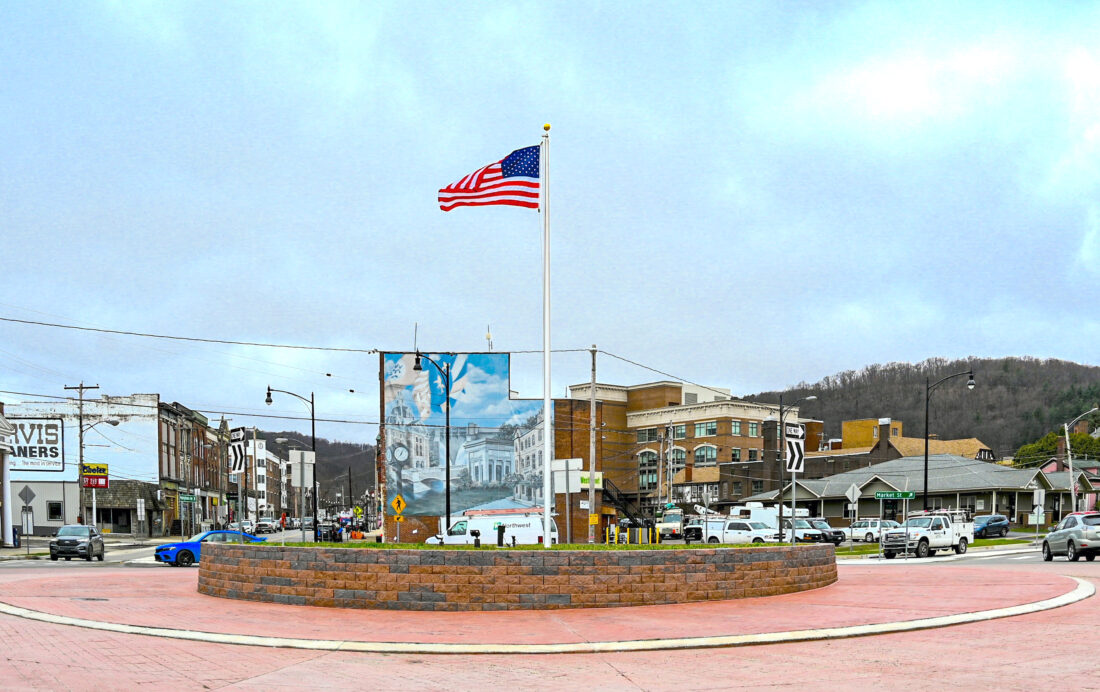Editor’s corner: It’s full speed ahead for roundabout projects

File photo A U.S. flag flies above the Warren roundabout.
Before its opening in 2023, a proposed roundabout in the city at Pennsylvania Avenue and Market Street was a hotly contested topic with plenty of opposition. But there were statistics on the side of the Pennsylvania Department of Transportation when it was constructed.
Last month, PennDOT announced the traffic circles continue to provide safe, efficient travel across the state. Since 2005,104 roundabouts have been built to improve traffic flow and/or decrease crash severity, and more than 30 additional roundabouts are in various stages of design and construction across Pennsylvania.
“For us, it’s simple. Roundabouts remove cross-traffic turns and eliminate T-bone crashes, while improving traffic flow,” said PennDOT Secretary Mike Carroll. “Any design that dramatically reduces the most serious crashes we see on the road is worthy of consideration in our projects.”
PennDOT finalized a data review through 2024 using 20 years of crash data from roundabouts around the state. Study findings showed that crashes with injuries were reduced by 51% and total crashes decreased by 7%. Pennsylvania data reflects national studies that found changing two-way sign-controlled intersections to a single-lane roundabout reduced injury crashes by more than 80%. Likewise, changing a signalized intersection to single-lane or multilane roundabout reduced crashes with injuries by up to 78%.
Across the border, the results are similar.
Last month, the New York state Department of Transportation praised the security that comes from roundabouts. In a Facebook post, the agency noted that for every story about a backup or a crash it does not change the results. “Roundabouts are proven safer than traditional intersections” due to fewer conflict points, slower speeds and a drastic reduction in serious crashes.
That does not mean the pathways do not come without hassles. At the location in Fredonia, N.Y., near the Interstate 90 exit a tractor trailer with an oversized load created a bottleneck after it couldn’t take the left-hand turns in June. It affected traffic coming from Route 60 creating an inconvenience of about 30 minutes.
That has been one of the few headaches.
Across New York, there are about 250 roundabouts keeping drivers and pedestrians safer with shorter crosswalks, slower cars, and only eight conflict points — locations where vehicle paths intersect, creating a risk of collision — compared to 32 at a traditional intersection.
Those features, according to the DOT, lead to 90% fewer fatalities, 76% fewer injuries and 35% fewer crashes. High numbers of motor-vehicle accidents at the Routes 20 and 60 intersection were an important formula in making the roundabout happen.
One thing the traffic circle forces is a calming of traffic. That is much different than what happens when a yellow light appears at a signal. Some motorists ultimately speed up to beat the light, while others slam on the brakes.
That equation adds to the mishaps. It is also why the state is currently considering more roundabout projects in Chautauqua County in the coming years.
PennDOT said even the Federal Highway Administration lists roundabouts as a “proven safety countermeasure” that reduces vehicle speeds by angling incoming traffic. Crashes that do occur tend to be sideswipe crashes with vehicles traveling at slower speeds rather than T-bone or head-on collisions, resulting in fewer injuries.
In addition to safety, roundabouts carry, on average, approximately 30 percent more vehicles during peak traffic than similar intersections. In off-peak hours, roundabouts cause almost no delay, compared to traffic signals.
Those results prove a true balance. One that comes with fewer hazards and a bit more convenience.
John D’Agostino is editor of the Times Observer, The Post-Journal and OBSERVER in Dunkirk, N.Y. Send comments to jdagostino@observertoday.com or call 814-723-8200, ext. 253.

